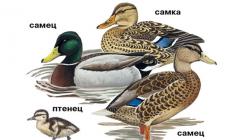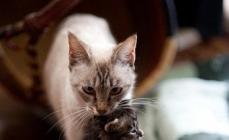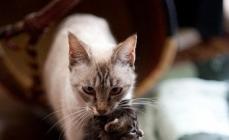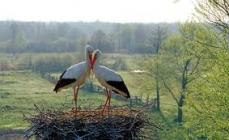Did you know that there are currently 41 species of cats living in the world? They are all wild. Absolutely all are predatory. Many of the species and subspecies are on the verge of extinction. In this article I would like to show all the diversity and beauty of the cat family. But first, I would like you not to be confused about the terms.
So, all cats belong to the order of predators, and then this order is divided into two suborders: canids and felines. Felidae include hyenas, mongooses, viverrids and felids. They are all very distant relatives, but cats are only those that are part of the feline family!
The entire cat family is divided into subfamilies: small cats and big cats.
Each subfamily is in turn divided into genera. There are especially many of them in the subfamily of small cats:
Genus Cheetahs (Acinonyx)
-
genus Caracal
-
genus Catopuma (Catopuma)
-
genus Cats (Felis)
-
genus Tiger cats (Leopardus)
-
genus Serval (Leptailurus)
-
genus Lynx (Lynx)
-
genus Marbled cats (Pardofelis)
-
genus Asian cats (Prionailurus)
-
genus Golden cats (Profelis)
-
genus Puma (Puma)
For the subfamily of big cats, everything is simpler:
-
genus Clouded leopards (Neofelis)
-
Panther genus
Now that we have determined which family cats belong to and divided them into subfamilies and genera, all that remains is to divide them into species! And there are 41 of these species. Each type is presented below.
Most likely, you will be trying to find your domestic cat breed or, for example, the Far Eastern leopard among all the species below. And you won't find them. Why? Because your domestic cat, like the Amur leopard, is a subspecies.
To make it easier for you to understand what a subspecies means, I’ll show you with an example where your domestic cat is located in the chain:
Family - felines / subfamily - small cats / genus - cats (felis) / species - forest cat / subspecies - your breed of domestic cat
And the Far Eastern leopard is here:
Family - felines / subfamily - big cats / genus - panther (Panthera) / species - leopards / subspecies - Far Eastern leopard.
I will describe the subspecies separately, otherwise this article will turn into such a big one that only a cat maniac like me can read it at once!
Well, now let’s finally get acquainted with all types of cats and admire them:
Subfamily - Small cats (Felinae)
genus - Cheetahs (Acinonyx)
species - cheetah (Acinonyx jubatus):
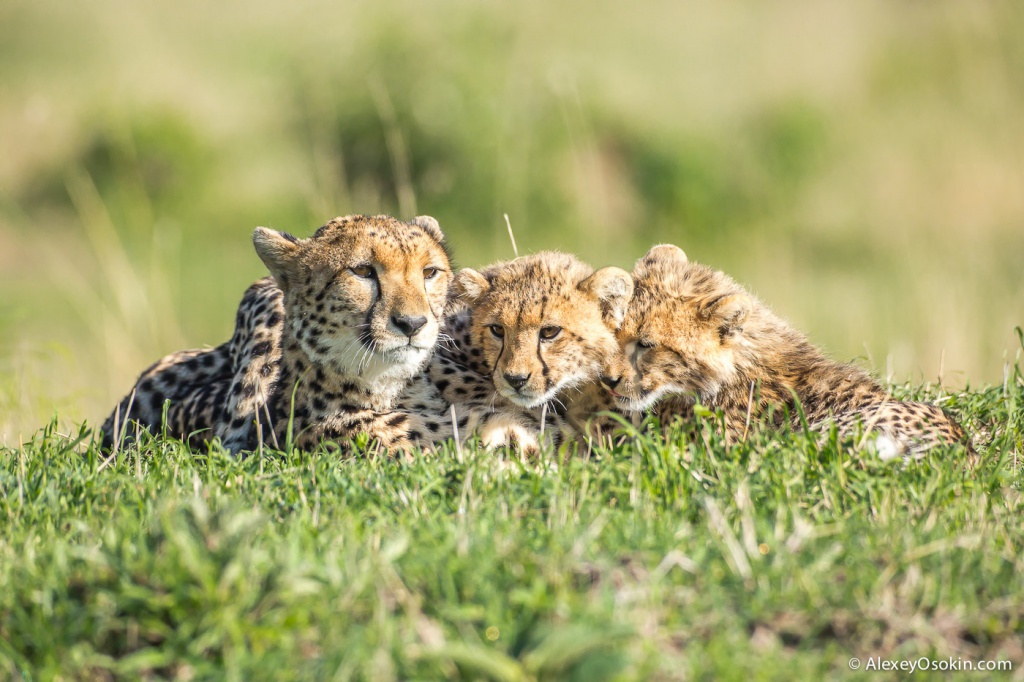
genus - Caracal
view - : 
genus - Catopumas (Catopuma)
view - Kalimantan cat (Catopuma bada):
View - Asian golden cat (Temmincki cat) (Catopuma temmincki):
genus - Cats (Felis)
View - Chinese cat (Gobi gray cat) (Felis bieti):
View - jungle cat (House) (Felis chaus):
View - ): 
Species - (Felis margarita):
View - : 
View - forest cat (Felis silvestris). This is exactly the subspecies of the forest cat - your domestic cat:
View - steppe cat (Felis libyca):
genus - Tiger cats (Leopardus)(not to be confused with leopards!)
View - :
View - Pampas cat (Leopardus colocolo):
view - Geoffroy's cat (Leopardus geoffroyi):
View - Chilean cat (kodkod) (Leopardus guigna):
View - Andean cat (Leopardus jacobitus):
View - ocelot (Leopardus pardalis):
View - oncilla (Leopardus tigrinus):
View - long-tailed cat (margi, margay) (Leopardus wiedii):
genus - Servals (Leptailurus)
View - : 
genus - Lynx (Lynx)
species - Canadian lynx (Lynx canadensis):
View - common lynx (Lynx lynx): 
View - :
View - red lynx (Lynx rufus):
genus - Marbled cats (Pardofelis)
- Marbled cat (Pardofelis marmorata):
genus - Asian cats (Prionailurus)
- Bengal cat (Prionailurus bengalensis):
View - Iriomota cat (Prionailurus bengalensis iriomotensis):
View - Far Eastern forest cat (Prionailurus bengalensis euptilurus):
View - Sumatran cat (Prionailurus planiceps):
View - spotted red cat (Prionailurus rubiginosus):
View - fishing cat (Prionailurus viverrinus):
genus - Golden cats (Profelis)
view - :
genus - Puma
species - puma (Puma concolor):
Cats of different breeds accompany a person throughout the history of his existence. Warm, soft and fluffy with a character as free as the wind, with a tail and ears, and without these “devices”. Sometimes they present gifts in the form of kittens or their playful activities, which are so nice to watch. Being our eternal and devoted companions, they have gained our favor so much that we dedicate songs and paintings to them, write books about them and make films. It's time to get to know them better. Today we have 20 of the most popular cat breeds with descriptions and photos. And they represent their family with dignity. All these cat breeds are beautiful in their own way. Their photos can easily decorate your desktop, become a background on your phone, or you can present them to your loved one.
20 most popular cat breeds
From the descriptions it will become clear what is the difference between the kittens:
- In the length of the coat;
- Sizes;
- Color and pattern on the fur coat;
- The size and shape of the ears and tail;
- In character traits.
Well, for now everything is in order!
1. Scottish Fold

The expression on this fluffy's face reflects his character. The Scottish cat breed is calm, inquisitive, noble and friendly. You can often see how an imperturbable mother gracefully sits in front of playful kids.
There is another feature of these four-legged animals - their ability to sit on their hind legs. But the handsome man’s ears confidently bend down. His thick and soft fur is so pleasant to the touch.


2. British breed

The smartest cat breeds are led by this serious-looking handsome man. Did you know that the British cat breed is considered to be distant relatives of not just anyone, but the Cheshire cat himself. But, despite the fact that their faces are decorated with a slight mist of a smile, the character of these short-haired, robust creatures is independent and serious.
Cats of the British breed are unlikely to allow themselves to be sat in arms and cuddled.


3. Maine Coon

If we talk about character qualities, then the Maine Coon cat breed is good friends. They watch people's lives with interest. But the maikun is not satisfied with just an observation position. These frisky pets are very playful.
And, despite the fact that the make-kun is quite weighty, he is far from being a lump, but even a gymnast can envy his mobility and ease of movement. And on top of everything else, Maine is also a talkative friend. His “vocabulary” is huge!



Even the name of the breed brings to mind the cold, and therefore, a fur coat! Yes, the Siberian cat breed is one of the best dressed. Any resident of the north can envy her fur coat. But this breed can boast not only of the thickness and beauty of its fur. But the power of the animal is not small.
Large cats even have huge paws. And yet, they remain very graceful. The Siberian looks amazing, with all its enormity, lightly, like a cloud “hanging” on a fence, or jumping like it’s flying!



This breed is amazing! When characterizing Angoras, one is tempted to switch to “the very best” at the beginning of any sign that characterizes it! For example, it is known that this is a smart, active, beautiful, trainable cat!
And besides, she is very attached to her owner and place, and she has a huge vocabulary of “words.” Did you remember to read “most” before each sign? And it is right! She has no equal!


 Small ears are the key to great happiness. Scottish fold cat.
Small ears are the key to great happiness. Scottish fold cat.Scottish Fold - a cat breed that is not recognized in Europe, but is very popular in our country.
Today it is fashionable to have unusual pets, even if we are talking about the most ordinary cat, then there should be something extraordinary in its appearance. For example, the absence of a tail, shiny skin instead of the usual fluffy fur, or...short ears touchingly pressed to the head. If a kitten that looks like an owl appeals to you, then the Scottish Fold or Scottish Fold breed is your choice.
Scottish They are becoming increasingly popular among cat lovers, and for very pragmatic reasons. Exotic cats are most often artificially bred, which means they are susceptible to various diseases and require special care and nutrition. In the modern rhythm of a huge metropolis, it is difficult to provide your pet with proper care and attention, so people choose animals as pets that optimally maintain a balance between beauty and unpretentiousness.
Scots are omnivores, and thanks to their soft mouton coat, they tolerate the Russian climate well - when it is hot and drafty in summer, and in winter the air is very dry due to central heating. There are widespread rumors that due to the specific structure of the ears, these cats often have hearing problems and other diseases. But veterinarians and breeders say this is a myth. Scottish cats hear perfectly and do not suffer from any deviations, except for funny curved ears.

Many people think that Scottish kittens are docked in infancy so that their ears lie properly, but this is also a myth. Small curled ears are a mutation. Yes, yes, a real mutation and thanks to this random miracle the breed was born, and quite recently.

In 1961, farmer William Ross came across a white kitten with funny ears on his estate. Fortunately, William was a true connoisseur and lover of animals, he registered the grown-up cat Susie with the GCCF of Great Britain (the register of cat breeds of the United Kingdom) and began breeding fold-eared kittens. Later, professional geneticists took over his work.
By the way, the ears of the first cat, Suzy, were bent just a little with a strong tilt forward, but now show-class cats have ears that fit tightly, and sometimes are not noticeable at all, this effect was achieved as a result of complex selection.
Unfortunately, later the BCF (British Cat Fancy) thought that breeding animals artificially was not entirely humane, and Scottish Folds can have various diseases, and the breed was excluded from the list of registered ones. Thus, this breed is not recognized in England and Europe, but is nevertheless popular throughout the world.

Scots are often confused with British cats, despite the fact that for an experienced specialist they are also not similar, as for us Persian and Sphynx cats are. It’s just that during the selection process, folds were crossed with the British and exotics in order to achieve more characteristic characteristics of the breed, as well as stable color and fixation of the ears.

It is noteworthy that not all Scots have floppy ears. There are Scottish Folds (low-eared animals) and Scottish Straights (animals with straight, regular ears). Kittens of both species are born in a litter, more precisely, all are born with straight ones, but some kittens have ears that fall in the second week of life, while others do not, so in one litter there may be brothers and sisters with different ears.
Today only fold-eared kittens are allowed to exhibit, but except for their ears, they do not differ from their relatives - the same fur, the same eyes, the same character. But straights, despite the doom of their show career, are very important for breeding. You cannot cross two folds, because this will lead to congenital skeletal defects in the offspring. The ideal husband and wife are straight and fold.
Its peaceful disposition makes this breed a true family pet. Forums of breeders and owners are full of messages about wonderful love and friendship between small children and fold-eared cats. A real fluffy pillow and a purring hot water bottle - these are the epithets used to describe the Scottish.
But your pet will not differ in intelligence. No, he can easily learn how to open the refrigerator with his paw or what time you come home. But your pet is unlikely to be a hunter, a guard, or a threat to the neighbors' cats.

The Scots are distinguished by their devotion and love for their owners. If you get such a cat, you will be able to observe a unique psychological experiment - the merging of the cat’s personality with the owner’s ego. This love will be proportional to the cat's helplessness and partially atrophied basic instincts. Although a city cat living in a comfortable apartment does not need all these survival skills. If the pet sees a fly or a bird, then the hunt will be limited to a ritual dance, clicking of the tongue and sluggish attempts to grab the prey, and if it so happens that the prey has given up on its own, it is not a fact that your Scotsman will eat it.
If you decide to breed this breed, then you will give birth together with the Fold. So if your pet is pregnant, read in advance how to deliver a cat or keep the veterinary emergency phone number in a visible place. It doesn’t happen once in a while, but if you’re forewarned, you’re forearmed!
Despite such minor disadvantages, Scottish Fold cats are optimally adapted to living with people. Such a cat respects and values both its personal space and its owners. And without difficulty he will become the warm and charming pride of the house and a friend of each family member.
1.
2.
4.
6.
8.
9.
10.
11.
12.
13.
14.
15.
16.
17.
18.
19.
20.
21.
22.
26.
27.
28.
29.
The most popular and famous breed with the “wrong” ear can undoubtedly be called the Scottish Fold. But these are far from the only representatives of domestic cats that can be recognized at first glance at their ears.
American Curl
The Curl is a breed of cat from the United States with rather unusual, outward-turned ears, which give the animal a slightly wary appearance. American Curl kittens are born with straight ears, but after two to seven days they begin to curl back.
Scottish fold
One of the most popular breeds today appeared in the 60s of the 20th century in Scotland. Scottish cats come with straight ears (Scottish Straight) and with ears bent forward (Scottish Fold). The reason for their unusual appearance is a genetic mutation.

Highlander
The Highlander is a relatively new American breed. These cats can be called descendants of another unusual cat with the exotic name “mountain lynx”. The animals inherited from their ancestors a lynx muzzle and backward-curved ears.

Peterbald
A breed of elegant, hairless domestic cats with a wonderful character, a smart face and very large ears. The St. Petersburg Sphynx owes its name to the city where it was bred by crossing the Don Sphynx and an Oriental cat.

Ukrainian Levkoy
Ukrainian Levkoy is an original looking hairless fold cat. The Levkoys contain the blood of Donchak and Oriental people (through Peterbalds), and to obtain lop ears the blood of Scottish Folds was once infused, but indirectly, that is, through a mestizo.

Elf
With a slender build, graceful long neck, expressive coordination and folded back ears, these are the elves. If we omit the breeding branches and simply say, then Elves are a mixture of curl and sphinx.

Kinkaloe
The breed appeared almost by accident. American Terry Harris decided to breed unusual cats with short legs and crossed American Curls with Munchkins. Kinkaloo were registered in 1997, they are distinguished by a wedge-shaped head, a strong massive body, a very long tail, short legs and ears turned back.

Oriental cats
The Oriental cat is one of the most popular and promising breeds. They are the closest relatives of the most famous eastern breed - the Siamese. These are graceful, graceful cats of a thin build with long legs, a wedge-shaped muzzle and large pointed ears.
There are more than 250 breeds of cats in the world: hairless and fluffy, wayward and friendly, affectionate and freedom-loving. But there is one thing that unites them all: they are incredibly beautiful. Anyone who wants to make a meowing friend can adopt a kitten from a shelter, or buy one from an elite nursery.
How much do the rarest cat breeds cost? Find out prices for the most exotic representatives of the cat world.
Asherah
Ashera is the most exotic domestic cat in the world. It was created by crossing a domestic cat and an Asian leopard cat. According to the creators of the breed, this cat is hypoallergenic, but there is controversy about this statement. You can become the proud owner of an Ashera for $22,000–$100,000.
Norwegian forest cat
The ancestors of this cat were bred by the Vikings 2000 years ago. Cute and fluffy, this cat can withstand severe cold and is an excellent hunter. The price of a kitten varies from $600 to $3000. 
Himalayan cat
This breed is very similar to the Persian, but differs in blue eyes and color point coloring (light body with a dark muzzle, paws, ears and tail). This breed was developed in 1950 in the USA. Himalayans are affectionate, obedient and friendly cats with a calm nature. A kitten of this breed will cost $500–1300. 
Scottish lop-eared
The calling card of this breed is its cute ears, which do not stick out upward, like those of ordinary cats, but hang down. This unusual detail of their appearance is a consequence of a gene mutation. These are smart cats that get along with everyone in the family and are never averse to playing. Another distinctive feature of this breed is that they can stand on their hind legs and look at what interests them. A kitten costs from $200 to $1,500. 
Peterbald
The Peterbald, or St. Petersburg Sphynx, was bred in Russia in 1994. These elegant cats have a slender body, a long head shape and large, set-back ears. The body may be bald or covered with down. Cats have an affectionate and sociable character and are easy to train. Such a kitten will cost $400–1200. 
Egyptian Mau
The appearance of these cats has changed little in 3000 years - since the times of Ancient Egypt. The spotted color of this breed appears not only on the coat, but also on the skin. To become the owner of an ancient Egyptian cat, you need to spend $500–1500. 
Maine Coon
This is one of the largest cat breeds. Representatives of this breed can weigh from 5 to 15 kg, and the body length of an adult Maine Coon can reach 1.23 m. But despite their formidable appearance, these are affectionate, gentle and playful animals. The price of a giant kitten varies between $600–$1500. 
Laperm
This is one of the most unusual breeds, which appeared in 1980 in the USA. In addition to their curly hair, cats of this breed have another feature: they are hypoallergenic, so they are perfect for families with allergies. A kitten of this breed costs $200–2000. 
Russian blue
This is one of the most popular shorthaired cats. It became known outside Russia in 1893. As legend has it, this cat brings good luck to the house. You can buy a Russian talisman for $400–2000. 
Serengeti
This breed was developed in 1994 in California. She belongs to large cats: the weight of an adult Serengeti is 8–12 kg. They have a strong build, large ears, spotted coloration and very long legs. You can buy such a cat for $600–2000. 
Elf
This young cat breed was bred in the USA in 2006. Elves are very friendly, intelligent, mischievous, sociable, inquisitive and loyal creatures. Those wishing to purchase such a unique pet will have to pay a considerable amount - 2000 US dollars. 
Toyger
This large cat breed resembles a tiger in color, which is how it got its name. The creator of the breed claims that the Toyger was bred to inspire people to care about the conservation of tigers in the wild. You can get inspired to save tigers for $500–$3,000.
American Curl
This breed was developed in California in 1981. Newborn kittens are difficult to distinguish from ordinary cats, but by the 10th day of life their ears curl back like small horns. This feature touches hundreds of thousands of people around the world. You can join the curl enthusiasts for $1,000–$3,000. 
Bengal
This breed was developed by crossing an Asian leopard cat with a domestic cat. These cats love to swim, and despite their impressive size (4–8 kg), they often climb onto their owner’s shoulders. You can buy a mini leopard for $1000–4000. 
Safari
This rare breed was created by crossing an ordinary domestic cat and the South American wild cat Geoffroy. The first representatives of the breed were bred in the United States in the 1970s to study leukemia. The weight of an adult cat is on average 11 kg. You can become the owner of a pet predator for $4,000–$8,000. 
Khao-mani
The earliest mention of this breed is in the Tamra Maew, or Cat Book of Poems (1350–1767). In ancient Siam, kao-mani lived only in royal families and were considered a symbol of good luck, longevity and wealth. You can buy an oriental talisman for $7,000–$11,000. 
Chausie
This one of the rarest cat breeds was created by crossing a domestic cat and a swamp lynx. These are very sociable animals that find loneliness difficult. Such cats will be happy with any company: a person, another cat or even a dog. The cost of a kitten varies from $8,000 to $10,000. 
Caracal
The caracal is endangered. Several years ago, the caracal moved from the category of wild predators to a number of exclusive and expensive pets. Therefore, by purchasing a kitten for $7,000–$10,000, you can help preserve this unique species.
Savannah
This breed was born by crossing an African serval and a domestic cat. These are the largest cats: the weight of an adult is on average 15 kg, and the height is 60 cm. Savannahs are known for their high level of intelligence, calm character, curiosity and activity. They love water treatments, walks in the fresh air and active games. To get such a cat, you need to have a large space for her to play and $4,000–22,000. 
